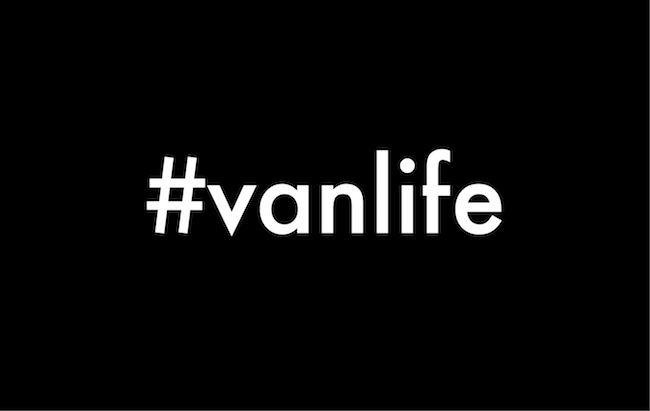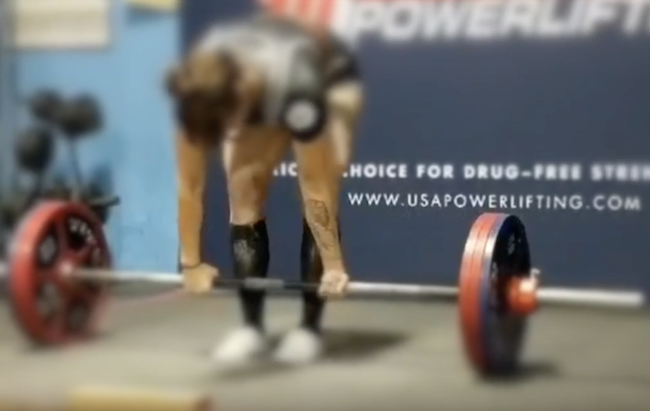What happens to a dream deferred?
Does it dry up
like a raisin in the sun?
Or fester like a sore—
And then run?
Does it stink like rotten meat?
Or crust and sugar over—
like a syrupy sweet?
Maybe it just sags
like a heavy load.
Or does it explode?
-Langston Hughes
Chapter 1 Nine-O-Nine
It had been a shaky take-off. A passing storm battered the hull of our B-17 Flying Fortress, the Nine-O-Nine, as she taxied to runway twenty four, creaking and sputtering every inch of the way. She endured far graver dangers in her life and came out virtually unscathed every time. One hundred and thirty two consecutive missions without a single loss or abort spoke to a real confidence you don’t normally have in a machine. This was, however, one the accolades of the spirit of our bird, not the body itself. Though bearing the name of such an accomplished and lucky bomber, the frame of the fortress we were flying never saw combat. To her credit, though, she saw her fair share of action; a witness and victim of the power of not one, not two, but three nuclear explosions. If the hull could take that and keep flying, a little hard rain is hardly worth a passing thought.
It was October of 2010, or maybe it was 2011. Regardless, in some October several Octobers ago, a good friend of mine, Jordan, invited me to take part in opportunity of a lifetime (to me). He knew I was something of an airplane freak, or in the more professional way I liked to describe myself, an aviation enthusiast. He also knew, courtesy of his step father, that Plymouth Municipal Airport was hosting an airshow with a handful of vintage WW2 aircraft on display and up in the air in a few days time. On top of that, he knew that his family already bought a number of special tickets covering admittance for themselves plus one. And besides all that, he knew that I would absolutely lose my mind to hype when he offered that one extra ticket to me. And promptly lose my mind I did.
My love of all things aviation was a somewhat late-onset passion in my childhood. When I was around nine or ten, for whatever reason, I started questioning my family about my late maternal grandfather. He passed by way of lung cancer just two years before I was born, so I never knew him personally. I only ever knew the universal acclaim that my family and family friends all gave him. He was exceptionally generous and even more chivalrous, had a very dry and quick wit, put everyone before himself, and his family before everyone else. But above all that, what really grasped my childish attention were the war stories, passed down to his children and eventually onto me. He was a navigator in the US Army Air Forces (the Air Force of the time) throughout World War Two, went on to serve as the navigator on the first aircraft designated Air Force One, Eisenhower’s Columbine II, and ended up a Lieutenant Colonel by the time he retired. His life seemed like a fantasy, a fantasy I wanted to replicate.
In a fairly short time, I had my first real role model. Something more than that, actually; I had a point of reference for my future. A type of person to strive to become and a very specific career path to follow. I wanted to follow very directly in his footsteps and pursue a life in the Air Force. I was absolutely infatuated with general aviation and military history and all points in-between, to the point where I committed several aircraft encyclopedias and similar texts and documentaries to memory. I could name and detail any aircraft in the sky like a car enthusiast could name the year, make, and model of any car on the road. My favorite part of family vacations was, consistently, the time spent at airports and in airplanes, unless a trip to an aviation museum or air show was involved.
I never once thought, however, that I would get the chance to fly in an aircraft that to me only existed as words and images on a page and in fantasies in my mind.
With the arrival of the evening of the airshow, I managed to collect my thoughts and sanity, only to have them once again thrown into excited disarray at the on-site revelation that our “special” tickets allowed us to be part of a brief, scenic flight in one of the vintage aircraft on display. That aircraft turned out to be the B-17 Flying Fortress, the Nine-O-Nine, which we walked through and got somewhat familiar with just minutes prior. The very same type of aircraft my grandfather crewed in World War Two.
His life seemed like a fantasy, a fantasy I wanted to replicate.
Our flight was scheduled for the tail-end of the airshow, the last flight of the day, right around sunset. We spent the next two or three hours exploring the other planes on display, including a B-24 Liberator and a T-6 Texan, both of which had their time in the sky to perform some low passes for the crowds. Just as things were starting to wrap up, a layer of grey, dreary clouds seemed to spawn out of nowhere and chose to linger over us as we were getting ready to board the Nine-O-Nine. Jordan’s mother commented about how it sucked that it started raining just in time for us, but shuffling across the pavement in the rain, approaching the entry hatch, I wasn’t even fazed by the world around me. In seemingly no time at all, we loaded in, we strapped in for take-off, and within a minute we were cruising at about fifteen hundred to two thousand feet.
The first few minutes of the flight were spent wandering about the fuselage, from the rear gun mount in the tail to the bombardier’s station in the nose, with the same kind of (or perhaps a greater) awe we had perusing the quarters the first time just hours earlier. After lapping the various positions two or three times, I was walking back through the bomb bay and decided to take a moment to sit in the vacant radio operator’s position, in the middle of the aircraft, while everyone else was inspecting the rear and forward stations, talking with our pilots, or settling down themselves in in the rear. Just as I occupied the laughably small seat in the cabin, one of the pilots came back, and after exchanging a few words, noted that the weather was starting to clear up. He came back to retract the overhead glass canopy above me. At the slightest crack of its opening, I was met with the almost deafening blast of the combined roar of the bombers four engines and the wind rushing by at a few hundred miles per hour. He invited me to peak my head out through the new gap, and luckily I was tall enough to do so at all.
Sure enough, the rain had stopped and the sun was shining through the cloud layer. In what seemed like a matter of seconds, the gloomy scene we saw from the ground was replaced with one of those painterly pink sunsets of a kind of vibrance that grabs your eyes and doesn’t let go until it’s gone. It was bar none one of the most beautiful scenes I’ve seen and been a part of in my life. I could have stood there looking around for hours, but I had to nullify my own hypnosis to let the others onboard pass back and forth and to give some of them a chance to try and peek out above the canopy, if only just barely. It would be a crime to keep that sight to myself. That was a view I could never forget, but it’s nothing compared to what followed, upon taking a seat in the cabin. What happened next is a moment that will stay with me forever, a fragment of time in a paramount position of memory I don’t think will ever be usurped. As immensely cliché as it sounds, it was truly one of those formative moments where something just clicks in your mind and all is right with the world.
In reality, nothing much happened. I just sat down, looked around, and looked out the small window to my side over the left wing. But from my perspective, I entered what I can only describe as a trance. It sounds fantastical describing it like that outright but it really is the best way to put it. The presence of everyone else onboard, even those in my periphery, didn’t even faze me. The loud drone of the engines just a few yards away on either side became nothing more than subtle white noise. The vibrations of the cabin and movement of the aircraft overall became indiscernible. In a way, it felt like the Flying Fortress wasn’t even there. In another way, it felt like I was the Flying Fortress.
It was during these few or perhaps many moments – I’m not sure exactly how long I was sitting there – that I realized I couldn’t spend my life like this. I would love nothing more than to spend eternity in that almost euphoric state. But I couldn’t.
This was a fantasy.
The reality is I would always have to come back down every time I went up, and I knew I couldn’t handle that. I was in love with the fantasy of flight, and there could be no greater way to guarantee I would never feel the same euphoria again if I really delved into the routine reality of flight. And on a more surface level, I wouldn’t be flying vintage bombers at no more than two thousand feet, free of responsibility, overlooking a picturesque Cape Cod sunset. I knew that experience was far from the norm. But I also knew I couldn’t risk weakening any potentially similar experience in the future, which would assuredly happen if I committed myself to the tedium of “real” flight. I didn’t know how to phrase it at the time, but I knew I wanted to treasure that sensation, not trivialize it.
After some unknown amount of time, we landed. Night fell, I joined Jordan’s family for a late dinner, and I went home. Life went on no different than it had two days or two years prior. I continued reading about aircraft and playing flight simulators and watching aviation documentaries and the like, mostly out of habit. From then on I identified that passion as nothing more than a hobby.
Chapter 2 Same but Different
A year later, my dad and I went to Orlando together on our usual family vacation. We own a timeshare space down there that we have a week in per year, so as tradition dictated for most of my life, we would spend a week there over Thanksgiving. This time, however, my mother and sister decided not to tag along.
After a dozen plus trips in a row, you couldn’t blame them, but I was still more than happy to visit the same parks and sit by the same pools, and luckily my dad saw it as us wasting our week for the year otherwise, so he and I went on our own.
He made sure to let me know well before even getting on our flight there that this was our chance to do something new and different for a change. We had no obligation to chauffeur my mother and sister around to any shops or any of the usual attractions and we didn’t have to schedule our own ventures (which mostly consisted of mini-golf anyway) around their time. So when we arrived at our resort, while my dad was checking in, I snagged a handful of tourist brochures for the first time in my life.
Naturally, the only thing that really stood out to me was an air museum called Fantasy of Flight in Kissimmee.
Now Kissimmee is right next door to Orlando, geographically, but by the time my dad and I arrived at the Fantasy of Flight, it genuinely felt like we just drove from the tourist capital of the world into the middle of nowhere. In retrospect, that seems to be a trend in most flight museums I’ve been to. But this one’s version of nowhere holds a particularly special place above the rest.
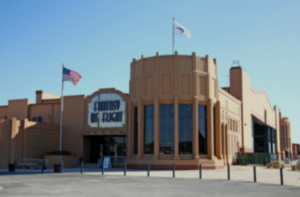 Right as you arrive at the museum, one is immediately met with a kind of quaint feeling. The whole facility is barely any taller than your average two-story building, and the parking lot is comparable to that of a chain restaurant’s. As you enter the lobby area, which entails the ticketing booth, gift shop, and a small diner, you’re struck with its retro 50’s décor and design, evocative of that golden age of aviation when commercial air travel started taking off but was still very much a luxury.
Right as you arrive at the museum, one is immediately met with a kind of quaint feeling. The whole facility is barely any taller than your average two-story building, and the parking lot is comparable to that of a chain restaurant’s. As you enter the lobby area, which entails the ticketing booth, gift shop, and a small diner, you’re struck with its retro 50’s décor and design, evocative of that golden age of aviation when commercial air travel started taking off but was still very much a luxury.
As you enter the museum proper, you’re presented with two paths: one leads straight into the museum’s hangars showcasing a variety of civil and military aircraft of decades past, and the other routes you through a more traditional-museum series of halls lined with murals and infographics on the history of aviation, with emphasis on World War 2. Predictably I went for latter. Even if I knew it all, I just had to see it all again.
My dad and I proceeded through this section slowly as I made sure to take in every detail, stopping once or twice to watch some old air combat footage in the style of old newsreels in a mock-briefing-room as one might’ve experienced in the era. It was fairly run of the mill for a museum and all familiar to me, but what really set this short experience apart was its grand finale: a pass through the fuselage of a B-17, the Piccadilly Princess.
Not one year after my experience on the Nine-O-Nine, I was back in the all-too uniquely comfortable hull of a Flying Fortress. The Piccadilly Princess was, predictably, notably more pristine than the Nine-O-Nine (somewhat ironic given that she was on display in a way that implied she was undergoing repairs at a camp). She was stripped of her guns and lacked the bubble turret in the aft, where visitors entered through her starboard hatch and made their way up the fuselage to a not-so-graciously added exit with a short staircase protruding out from beneath the nose. She was a very different beast but not altogether unfamiliar. The memories and the sensations of the last time I was in a similar spot began to resurface, and I knew at once where I had to be. I assumed my position at the radio operator’s desk and let my dad know I would be a few minutes.
Chapter 3 Always Happy
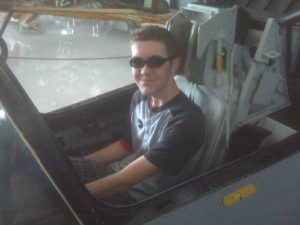 I made my way out of through the front exit, just behind the cockpit, and rendezvoused with my dad at the endpoint of this tour and the formal entrance to the showcase hangars. We started exploring and examining all the planes on display. It was far from the largest collection I’d seen but it had some quality highlights. It was my first time seeing a Ford Trimotor, or flying boats like the Short Sunderland and a PBY Catalina in person, as well as a wide range of biplanes like the Sopwith Camel and a Fokker Dr.1 Triplane (that which is so famously associated with the Red Baron, done up in his same bold red livery). There were a handful of more modern machines, like an A-7 Corsair II in which I got to sit in the cockpit, but for the most part they were mostly vintage aircraft. My favorite.
I made my way out of through the front exit, just behind the cockpit, and rendezvoused with my dad at the endpoint of this tour and the formal entrance to the showcase hangars. We started exploring and examining all the planes on display. It was far from the largest collection I’d seen but it had some quality highlights. It was my first time seeing a Ford Trimotor, or flying boats like the Short Sunderland and a PBY Catalina in person, as well as a wide range of biplanes like the Sopwith Camel and a Fokker Dr.1 Triplane (that which is so famously associated with the Red Baron, done up in his same bold red livery). There were a handful of more modern machines, like an A-7 Corsair II in which I got to sit in the cockpit, but for the most part they were mostly vintage aircraft. My favorite.
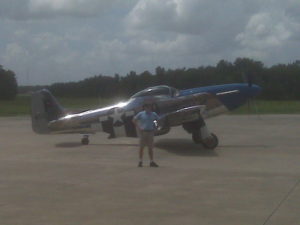 Not the least of my all-time favorites, the legendary P-51D Mustang, was also on display. Not only that, but much to my ecstatic surprise, Kermit Weeks – aviation enthusiast, owner, and curator of the museum – decided to take it out that day for a spin. My dad and I loitered some more and passed the time until Kermit called the attention of the very small crowd of that day’s patrons outside for the show. It was quick and unvaried; just some sweeping flybys of the property and a low-pass here and there. But the sight and the sound of it all was mesmerizing, from taxiing to the runway to taxiing back to the tarmac.
Not the least of my all-time favorites, the legendary P-51D Mustang, was also on display. Not only that, but much to my ecstatic surprise, Kermit Weeks – aviation enthusiast, owner, and curator of the museum – decided to take it out that day for a spin. My dad and I loitered some more and passed the time until Kermit called the attention of the very small crowd of that day’s patrons outside for the show. It was quick and unvaried; just some sweeping flybys of the property and a low-pass here and there. But the sight and the sound of it all was mesmerizing, from taxiing to the runway to taxiing back to the tarmac.
At some point during this, my dad snuck away, came back shortly after Kermit landed, and surprised me with the one thing that could top the rest of the experience so far: a biplane ride for that same day. It was a standard albeit more expensive option regularly available through the museum, but it was the gift of a lifetime for me.
We continued exploring the hangars and got some lunch at the diner to pass the time. While we were eating, we noticed the ever-reliable dark and gloomy tropical Florida storm was inching its way towards us. It was then announced that all biplane flights for the rest of the day were promptly canceled thanks to that coming shower. At around the same time, Kermit himself popped into the diner for his own lunch. My dad took the chance to ask him about the cancellation of our flight, without failing to also mention how excited I was for it and how much I loved aviation overall. Setting aside my embarrassment, I affirmed it with Kermit, thanked him for the airshow and proceeded to explain how much I love the P-51D and the rest of his collection, slipping in details here and there that only some crazed enthusiast would know. He responded in kind, lauding my knowledge and happily recalling some of his other joy-flights outside of the museum. We chatted like this for a bit until he was called away to his own food.
Before he left, he told me and my dad that we could stay for a bit after the museum’s closing, in-case the storm passed through by that point, and he would get one of his pilots working there to get us up in the air.
There was no guarantee nor any indication that the weather was going to get any better any time soon. But the prospect of having the rest of the space essentially all to myself, if only for a little bit, was like a dream come true. So time passed, we checked out the gift shop and the hangars some more, and eventually closing time came. 4 p.m. to be precise.
Kermit must’ve informed the staff about me or, more likely, that kind of thing happens a lot and they just know when someone says “Hey, Kermit said I could stick around”, they’re probably telling the truth. Either way, I took a few minutes to explore the entire place once more, now with just me and my dad, until a staff member found us and lead us outside, where the rain had just subsided, the sun was shining in beams through the cloud layer, and a D-25 New Standard was waiting for us to board.
Our pilot told us that Kermit told him about us, and we thanked him for staying a bit later to give us the flight. He said he was “Always happy to fly”.
In a very relaxed kind of atmosphere, almost more of a conversation than a history lesson, he told us about the D-25 and glossed over some safety agreements, gave us our cap and goggles, and we loaded in. We took off from the long dirt runway of the museum – still somewhat muddy from the passing rain – and from that moment on time seemed to slow. The flight in reality was only about 15 minutes, but it felt like eons.
In reality, nothing much happened. I sat down, looked around as we flew through the open, warm Florida air. From my perspective, I entered what I can only describe as a trance. Not the pilot nor my dad in the seat behind me registered in my mind even once. The loud drone of the open engine just a few feet in front of me became nothing more than subtle white noise. The vibrations of the vintage frame and movement of the aircraft overall became indiscernible. In a way, it felt like the New Standard wasn’t even there. In another way, it felt like I was the New Standard.
It was during these 15 minutes that something I can only describe as profoundly relieving dawned on me.
He said he was “Always happy to fly”.
I was back up. I had come down from my previous high aboard the Nine-O-Nine and now I was back up feeling the same sensations. At the same time, I realized just how much I loved the routine of flight. An 8 or 12 or 16 hour flight sounds nightmarish to some but idyllic to me. I realized how happy I was on the flight down the Orlando, and how much I anticipated the flight back. I wasn’t and I wouldn’t be flying in vintage aircraft at no more than two thousand feet, looking at sunbeams on the horizon lighting up a world glistening with a passing storm’s puddles and droplets. Something clicked and I just knew that it was never a question of if I could be happy to always be flying, but rather it was just an answer all along: yes, I am always happy to fly. Each and every instance is a fantasy realized, a dream come true, a dream that was never lost.

Epilogue Chasing Sunset
The experiences I’ve described thus far have been uniquely “vintage” in design; these aircraft were not designed for luxury or comfort. My most recent profound flying experience, however, rests on the opposite end of that spectrum.
Over the course of Christmas 2012 and New Years 2013, my family splurged on a vacation to London and Paris during each of those holidays, respectively. Part of the splurge was a first class flight on Virgin Atlantic to and from Heathrow. On the return flight back, we left shortly before sunset in London.
For almost the entirety of the next 8 hours, I watched the sunset.
Flying Westward at a rate that nearly kept up with the Sun as it dipped below the horizon, I couldn’t bring myself to sleep or waste the time away with a movie. My eyes were transfixed on what seemed like perpetual dusk, as I listened to the piece that plays from the start of this story, and through the rest of its album which you can listen to below. Ever since, it’s been retroactively associated in my mind with these spellbinding experiences.
Chasing the sunset over the Atlantic was another fantasy realized which I simply couldn’t imagine before. An audio-visual trance like nothing I’ve known before or since. I hope that you may one day know your own or know it once more.
– – – –






